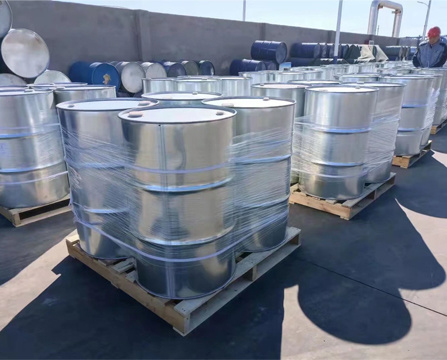Preparation Methods and Precautions of Acetonitrile
Time:
2024-05-13
Acetonitrile: An Important Chemical Material
Acetonitrile, the chemical formula CH, CN, is a colorless and transparent liquid with a pungent odor. It belongs to a kind of organic compounds and has important application value in industrial production. In this paper, the properties, preparation methods, application fields and safety precautions of acetonitrile are introduced in detail.
Basic properties of 1. acetonitrile
Acetonitrile is a volatile liquid with a pungent odor. Its melting point is about -83 ℃, boiling point is about 35 ℃. Acetonitrile is less soluble in water, but is miscible with many organic solvents. It is an excellent organic synthesis intermediates and solvents, colorless oily liquid. Its chemical properties are relatively stable, but it is easy to react under the action of high temperature, high pressure or catalyst. Acetonitrile can be oxidized to compounds such as acetic acid at high temperatures. In addition, acetonitrile is less toxic, but it may still cause harm to the human body in the case of prolonged exposure or inhalation of high concentrations. Therefore, it is necessary to pay attention to safety protection measures during operation.
Preparation method of 2. acetonitrile
There are many methods for preparing acetonitrile, one of which is obtained by ammoxidation of ethylene with ammonia. The reaction is usually carried out in the presence of a specific catalyst to improve the reaction efficiency and selectivity. Another method is the preparation of acetonitrile by hydrolysis of acrylonitrile. In addition, acetonitrile can also be obtained by a reaction such as dehydrogenation of ethanol and amination of ethanol. The process flow of these preparation methods is relatively complex and needs to be carried out under strict conditions to ensure the quality and purity of the products.
Application fields of 3. acetonitrile
As an important organic compound, acetonitrile has a wide range of applications in industrial production. First of all, it is an intermediate for the synthesis of many important chemicals, such as acrylamide, acrylic acid, etc. These compounds have a wide range of applications in the field of medicine, pesticides, dyes and so on. Secondly, acetonitrile can be used as a solvent for coatings, inks and other industrial fields. In addition, acetonitrile can also be used in the manufacture of synthetic fibers, plastics and other polymer materials. With the continuous development of science and technology, the application field of acetonitrile will continue to expand.
4. Safety Precautions
When operating acetonitrile, you need to pay attention to the following safety matters: First, acetonitrile has a pungent odor, and prolonged contact may cause irritation and damage to the human respiratory tract and skin. Therefore, it is necessary to wear protective masks and gloves during operation. Secondly, acetonitrile is a flammable and explosive liquid, and it is necessary to avoid fire and static electricity during operation. In addition, the storage and transportation of acetonitrile also need to comply with relevant safety regulations to ensure safety. Finally, waste acetonitrile needs to be properly disposed of to avoid environmental pollution.
5. Summary
In this paper, the properties, preparation methods, application fields and safety precautions of acetonitrile are introduced in detail. As an important organic compound, acetonitrile is widely used in industrial production. With the continuous development of science and technology, the application field of acetonitrile will continue to expand. When operating acetonitrile, it is necessary to pay attention to safety precautions to ensure personal safety and environmental protection. At the same time, it is also necessary to strengthen the research and development of acetonitrile to promote its application and development in more fields.
Key words:
Ketones
Alcohols





